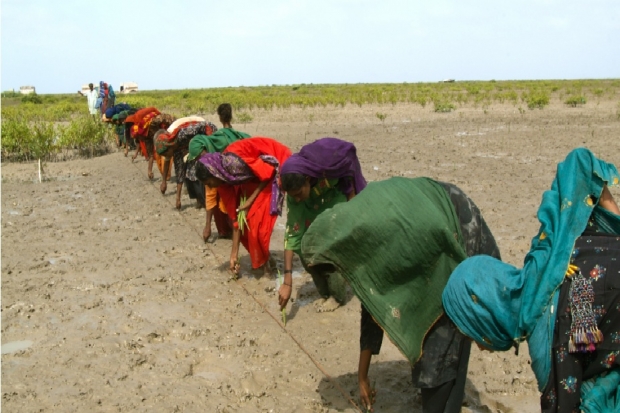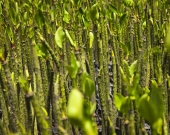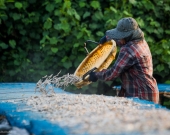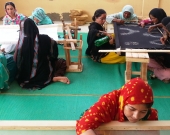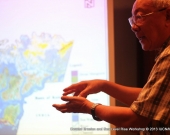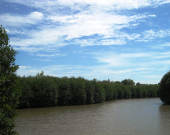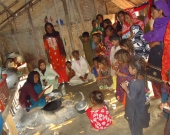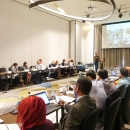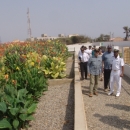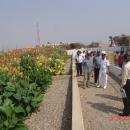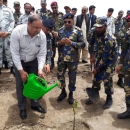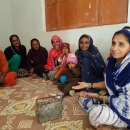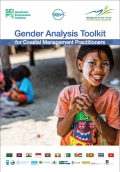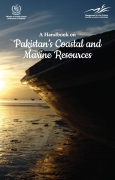The Mangroves for the Future (MFF) is a program that aims at promoting sustainable coastal development through participatory and inclusive decision making for facilitating ‘strategic investments’ in coastal ecosystems. For a country like Pakistan, inclusion in MFF opens up a number of exciting opportunities for both positively participating in ‘region wide’ initiatives and in prioritizing actions to effectively mobilize critical national stakeholders and resources for visioning, implementing and sustaining a viable national coastal management regime. There is now a growing recognition in Pakistan that sustainable coastal management can only be realized through the adoption of an ‘Integrated Coastal Management (ICM)’ process. Within this context, MFF creates an extremely viable ‘institutional and programmatic’ space for ‘incubating’ well coordinated efforts for facilitating progress towards establishing a ‘National ICM regime’ for Pakistan as both its ‘approach’ and ‘implementation mechanism’ addresses key ‘gaps’ and ‘constraints’ hindering desirable progress. The Programs of Work (PoW’s) contextualizing the MFF can suitably assist in establishing ‘priority areas of action’ and in setting ‘appropriate landmarks’ in the ‘ICM Roadmap’.
The ‘implementation mechanism’ of the MFF provides a unique opportunity for Pakistan to assemble on one ‘forum’ – the NCB - all the relevant stakeholders – from the government, private sector, and civil society to discuss, debate and strategize for ‘action’ through ‘consensus’ and ‘coordinated’ mobilization. Absence of such a ‘centralized’ and ‘coordinated’ forum for discussion and decision making has been a significant roadblock in the way of catalyzing collective action of key stakeholders. A sustained ‘dialogue’ in the NCB can lead to facilitating progress towards developing the required policies, institutional spaces, plans and implementation mechanisms that enable appropriate actions.
Physical and natural environment
Pakistan’s coastline is about 1026 km long and the Exclusive Economic Zone (EEZ) covers an area of about 240,000 sq. km. The maritime zone of Pakistan, including the continental shelf extends up to 350 nautical miles from the coastline. The shelf of the coast is dominated by Indus (Major River of Pakistan) canyon in the coast. The continental shelf varies in size distinctly along the Sindh and the Balochistan provincial coasts. The sea ward coastal zone up to 12 Nautical Mile (NM) from the coastline is basically within the jurisdiction of the two provinces (Sindh & Balochistan). The coastal zone beyond the 12 NM up to 24 NM is the contiguous zone and beyond the 12 NM up to 200 NM is under the jurisdiction of federal governments. However, the protection and conservation of the coastal resources is the responsibility of the federal government, which also has the authority for legislation and its enforcement within 3 mile limit of the ports and within the 12 to 200 NM of the EEZ.
The two coasts exhibit varying climatic and physical characteristics. The two distinct features of the coast are influenced by extreme most reaches of ‘Indian Monsoon’ weather and the ‘Mediterranean weather’. Coincidentally, this division almost falls on the Sindh – Balochistan administrative border. The Sindh coast can further be sub-divided into two parts, namely, The Indus Delta / Creek system and the Karachi (capital city of Sindh province) Mega City coast. Balochistan coast can also be sub-divided into the Lasbela and the Gwadar (districts of Balochistan province) coasts.
Geomorphology of the coastline
The Sindh passive coastline is characterized by mudflats, delta wetlands, estuary systems and a wide and almost flat continental shelf. The Balochistan coastline is characterized by four types of land forms, namely, Raised beaches, Sand dunes, Playas and Pediments. The soil cover along the coast is generally in-situ or zonal and mainly composed of sand and silt.
Climate
The climate of Pakistan is tropical and is dominated by the monsoon regime. The average rainfall on the coast of Sindh amounts to about 200 mm and that on the coast of Balochistan about 100 m.m per year. The south-west monsoon season lasts from May to September and the North-east lasts from November to March, with April and October being the transition months.
The tides are the mixed semidiurnal type with two highs and two lows each day. The tidal range is about 3.5 m with a slightly higher range on the coast of Sindh. At low spring tides the mudflats and rocky beaches become exposed to about 1.5km on an occasional spot, particularly on the coast of Sindh. The surface temperature has range between 23.8C and 28.7C for Indus delta, 23.5C and 29.1C for off Karachi and 23.5C and 29.3C off Balochistan coast.
There is an increasing trend in the frequency cyclonic disturbances with fluctuations. No definite trend has been observed in case of cyclonic storms and severe cyclonic storms. Moreover the short periods of fluctuation of 2-6 years are predominant. The historical data analysis shows that both coasts are equally vulnerable with June being the most vulnerable month for both coasts.
Land Use
The Indus deltaic coast is sparsely populated with small predominantly fishing communities living along the creek system of the coast. No major infrastructure development has taken place and no significant commercial industrial activities occur. The most prominent ecological feature is the mangroves forests. Karachi city on the other hand is a major hub of activity being the main commercial and industrial centre of Pakistan having an estimated population of approximately 18 million. A naval facility and a shipyard are located along the Karachi coast. Several power plants are also situated along the coast. The Balochistan coast is again sparsely populated with scattered fishing communities. Natural mangrove vegetation is limited. A deep sea part has been constructed in Gwadar. A Pakistan Navy facility exists at Ormara. Fish harbors are developed at Pasni, Gwadar and Dam. A coastal highway is linking Karachi with all the coastal towns of Balochistan. The coastal area therefore, has the potential of witnessing greater commercial activity and infra-structure development.
Pakistan’s Mangrove Ecosystem
The economic importance of mangroves in Pakistan largely comes from the fishery resource that they harbor. An estimated 80% of the fish caught in coastal waters spend at least part of their life cycle as fry in the mangrove creeks, or depend on the food web within the mangrove ecosystem. Shrimp fishery is the major fish export of mangroves, accounting for 68% of the $100 million of the foreign exchange the country earns from fisheries exports. The mangrove swamps of the Sindh coastal zone are extensive, covering 243,000 hectares (ha) compared with 7,400 ha along the Balochistan coast. The zone also has large areas of bare mud flat. The system is intersected by large and small creeks that allow tidal water to move into and out of the area during the twice-daily ebb and flow of the tides. The mangrove swamps are made up of several indigenous species of trees that are adapted to live in brackish water or sea water. The main species in the area is the black mangrove Avicennia marina, which has aerial roots growing up out of the mud. The swamps also have less common species of mangrove tree, the main one on the Sindh coast being the red mangrove Rhizophora mucronata. Both species of mangrove tree are important sediment and soil stabilizers. Several species of marine seaweed also grow in mangrove swamps, often as algal mats on the surface of the mud.
National Coordinating Body of Pakistan
The NCB is a multi-stakeholder body headed by the Secretary Ministry of Climate Change. It was notified on 14 September 2009. Presently, it constitutes 24 members representing various government departments, civil society and private sector organisations. The membership composition includes 13 government organisations, five civil society organisations, three private sector organizations, two UN Agencies and one academic institution.
The membership of NCB continues to expand, as the process of joining has been kept flexible and open to relevant stakeholders. During 8th NCB meeting held on 24 October 2012, based on the interest expressed, the Ministry of Defence Pakistan and a private sector organisation, Pakistan Internal Bulk Terminal (PIBT) has been included as the new members of NCB.
Priority Activities Identified for 2012
* Facilitating functioning of NCB and Sub-committee of NCB
* Hosting of RSC-9 from 18-21November 2012
* Finalization of ICM Handbook
* Finalising award of Second cycle of SGF
* Initiate implementation of Medium Projects
* Participation in international events
Revision of National Strategy and Action Plan and Implementation of Work Plans:
Revision of NSAP has been undertaken and the draft report was presented during the 8th NCB meeting held on 24 October 2012. NCB has recommended further consultation with the relevant stakeholder to finalise the output. The NCB has shown high level of commitment to get the revised NSAP adopted as a strategy for coastal areas at national and provincial levels after getting the document approved from the federal and provincial cabinets.
The revised NASP elaborates a road map for defining the scope of MFF PoWs in terms of knowledge management, capacity development and mainstreaming of gender, climate change and private sector for integrated coastal resources management. It suggests a two tiered mandate for NCB as an overseeing and steering body for operational aspects of MFF Programme at the national level and for actingas multi-stakeholder forum that needs to be used as a launching pad for improved dialogue and for decision-making pertaining for improved coastal management.
Further, under some of MFF interventions partnership building with other organisations and on-going programmes in coastal areas has been encouraged including Sindh Coastal Community Development Project,Balochistan Partnerships for Sustainable Development, Pakistan Internal Bulk Terminal (PIBT), University of Karachi and University of Sindh for awareness raising and implementation of field project related to mangrove conservation.
Priority Activities Identified for 2013:
- Implementation of NSAP
– Organise 4 NCB meetings –
– Development of Coastal Programme (Apr-June 2013)
– Identify a potential regional project
– Implement II and III cycle of small grants and medium grants
– MLE of small grants and medium grants
– Documentation and analysis of small and medium projects
– Finalise ICM Handbook by March 2013
– Facilitate implementation of UNEP’s Coastal Erosion Project
- Capacity Building
– PCM training – next training in February-March, 2013
– Climate change coastal resilience workshop scheduled in April 2013
– Cross learning visits among grantees
- Knowledge Management and Outreach
– Video documentation – field stories based on small grants and other coastal activities
– Media/Private sector exposure visits
– MFF dedicated issues of local magazine / newsletter
– Regional photography competition and radio show
Regional Initiatives
- Implementation of two regional initiatives will start in 2013:
– UNEP initiative on “Strengthening the Resilience of Coastal Communities, Ecosystems, and Economies and to Sea-Level Rise and Coastal Erosion” (Pakistan, Thailand)
– FAO on ‘Income for Coastal Communities for Mangroves Protection’ (Pakistan, Vietnam, Thailand)
 Pakistan
Pakistan 